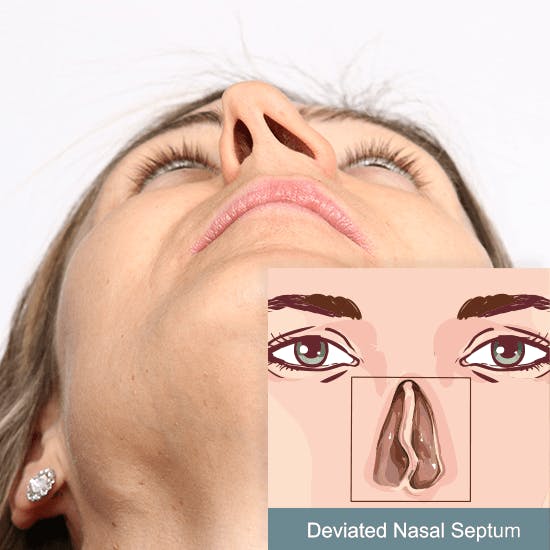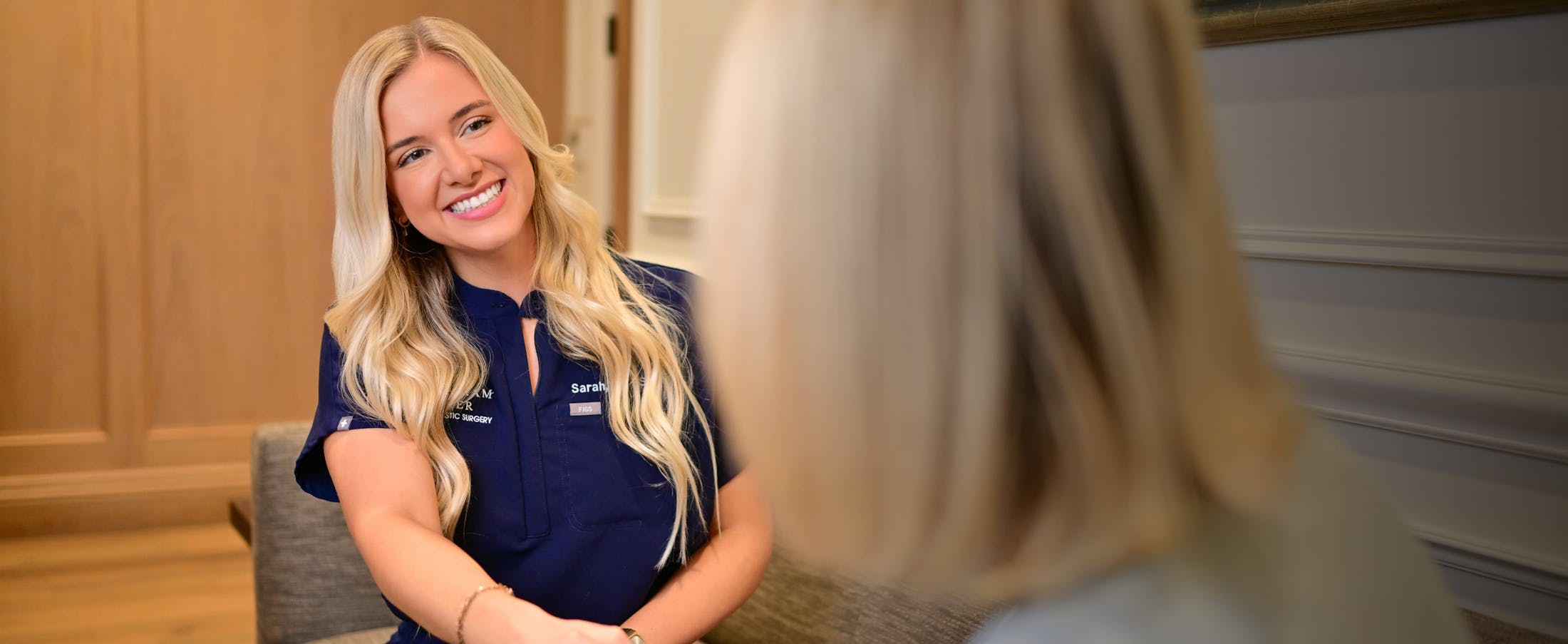

DEVIATED SEPTUM OVERVIEW
Common causes of breathing problems
One of the most common causes of breathing problems is a deviated septum. This occurs when the nasal septum (the wall separating the nasal passages) is crooked. Uneven airflow can make one nasal passage more effective than the other, causing problems in the smaller nasal passage. Most people have some degree of deviation since no face is completely symmetrical. However, breathing issues usually occur only if the deviation is severe. Severe deviation can present with a septum that is curved into almost an “S” shape.
Humans are incredibly adaptable. Many people with breathing problems simply deal with them for years. Some people who have breathing problems don’t even know that their breathing isn’t normal, even if it is causing problems like poor sleep or difficulty during strenuous exercise.
Do you have trouble breathing? If so, you might be surprised to find out how fixing your deviated septum with septoplasty could change your life.
SIGNS OF A DEVIATED SEPTUM
Not sure if you have a deviated septum? The only definitive way to find out is to visit your doctor and have an exam. However, there are signs and symptoms that can indicate you may have some significant deviation.
- Snoring
- Frequent nasal congestion
- Sleep apnea
Do you snore? Though many people who don’t have a deviated septum snore, it’s more common in those who do. Nasal congestion from the deviation can cause snoring and loud breathing while asleep. In more severe cases of deviation, sleep apnea can occur.
People with sleep apnea stop breathing momentarily, typically many times an hour. This can be dangerous, and also result in poor sleep, which has a negative impact on the overall quality of life.
If the breathing issues are serious enough, the heart has to work much harder during sleep, which can eventually lead to heart failure and other serious heart problems.
People with a deviated septum may have frequent headaches and congestion, thanks to built-up pressure from uneven airflow. They are also more susceptible to nosebleeds and sinus infections. If you find that you’re having problems with your nose on a regular basis, you could have a deviated septum.
Finally, poor breathing is a major symptom of a deviated septum. If you have allergies or spend a lot of time exercising, you may notice this symptom more quickly than someone who is sedentary or doesn’t struggle with nasal allergies.

WHAT IS A SEPTOPLASTY?
Once you receive a deviation diagnosis, you can start to think about fixing your deviated septum. Septoplasty is the best option for permanently correcting this functional issue and restoring breathing back to normal—permanently.
Also known as functional rhinoplasty, a septoplasty is a surgical procedure that alters the structure of the nose and creates more even airflow through the nasal passages. During a septoplasty, the surgeon makes one or more incisions, either inside the nostrils or in the columella, the strip of skin in front of the septum.
Through the incisions, the surgeon then manipulates cartilage, bone, and skin to open up the nasal passages for better breathing. Many patients choose to combine this functional procedure with a cosmetic rhinoplasty to gain multiple benefits at once. While insurance will sometimes reimburse for functional rhinoplasty, patients must pay out of pocket for any cosmetic changes.
Recovering from septoplasty is easier than many patients imagine. After a week to ten days, patients can go back to desk jobs and many normal activities. Patients may need to postpone exercise for several weeks, but they are rewarded for taking care of themselves with improved breathing for life.
LIFE-CHANGING RESULTS OF FIXING YOUR DEVIATED SEPTUM
Although it makes sense that after a septoplasty, a patient’s quality of life typically improved, many patients are surprised by how life-changing the results can be. Once they have recovered, septoplasty patients breathe better than they ever have, and they realize just how poor their breathing was before the surgery.
Better sleep, more comfortable breathing, and fewer problems like congestions, nosebleeds, and snoring all help patients lead better lives. No follow-up procedures are needed, and after all the swelling has resolved (typically residual swelling disappears between 6-12 months after surgery), patients don’t often think about the surgery.
SEPTOPLASTY SPECIALIST DR. EDWARD BUCKINGHAM
Do you have trouble breathing? If you have been thinking about fixing your deviated septum, or you think you might have one, it’s time to take action. Dr. Edward Buckingham, a renowned Austin facial plastic surgeon, is double board-certified in facial plastic and reconstructive surgery and otolaryngology (ear, nose, and throat). He is an expert in septoplasty and rhinoplasty and can help you to live your best life. For more information, call Buckingham Center in Austin, TX at 512-401-2500 to schedule your consultation with Dr. Buckingham.


